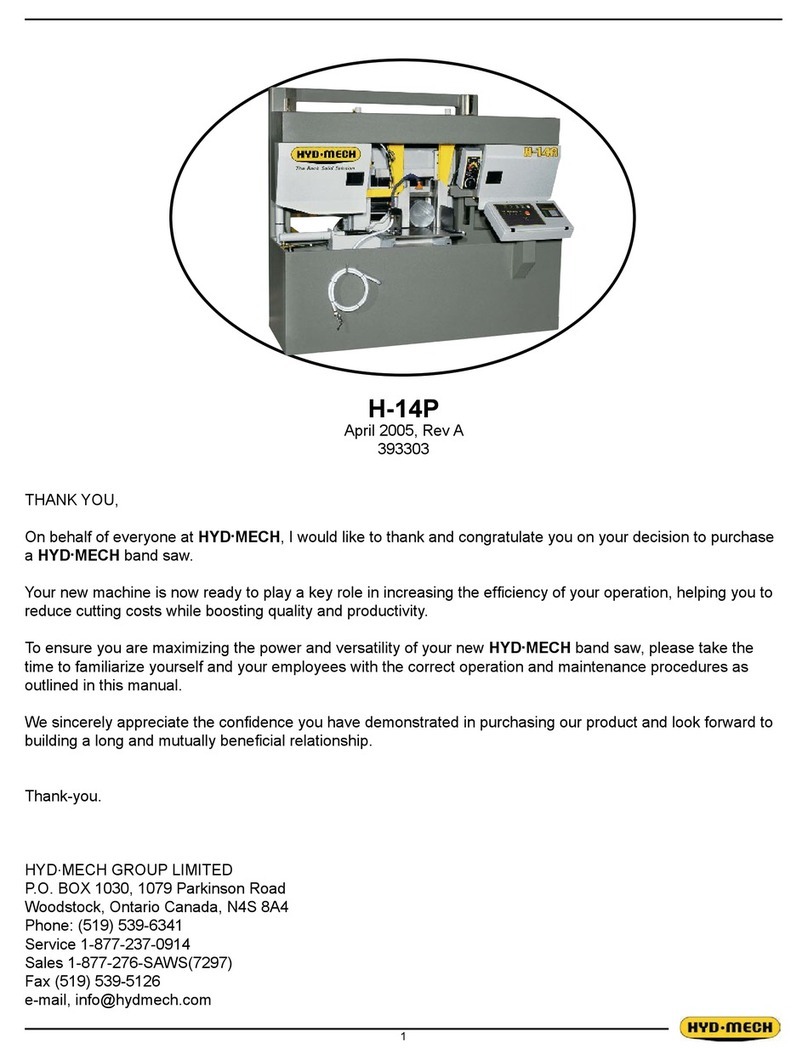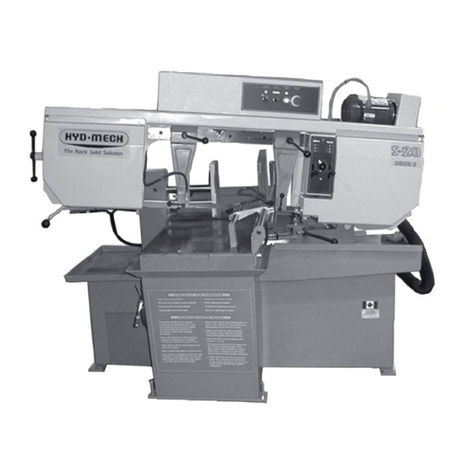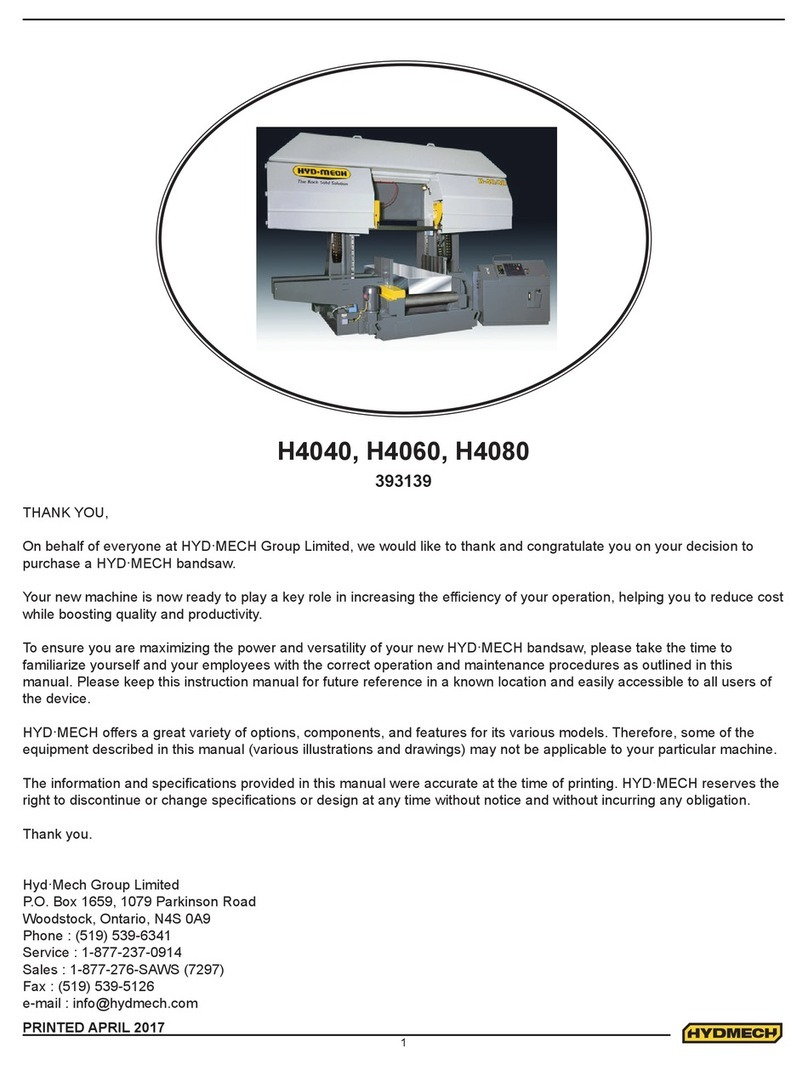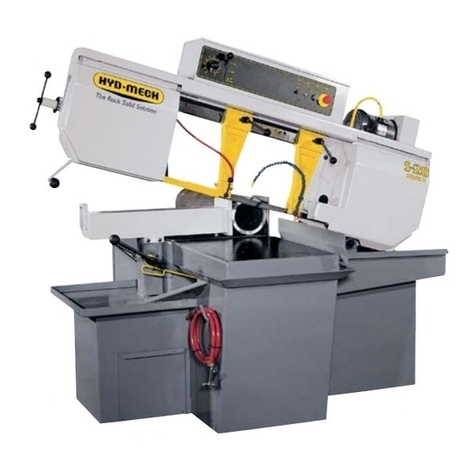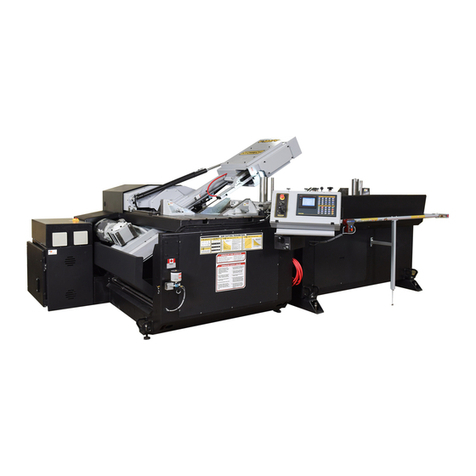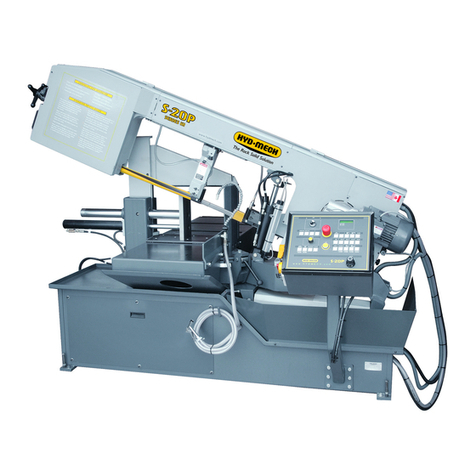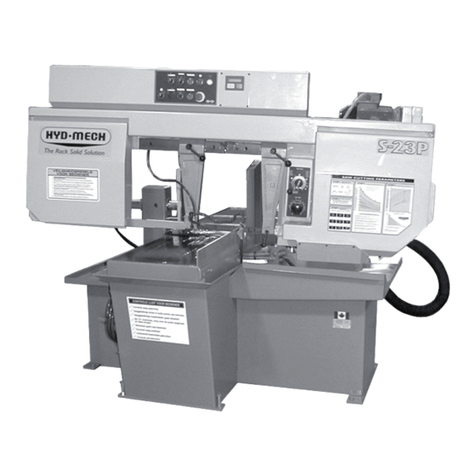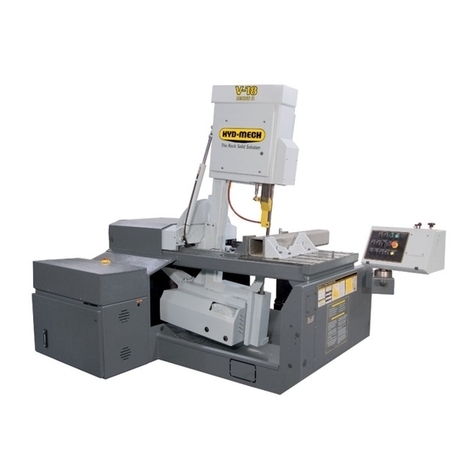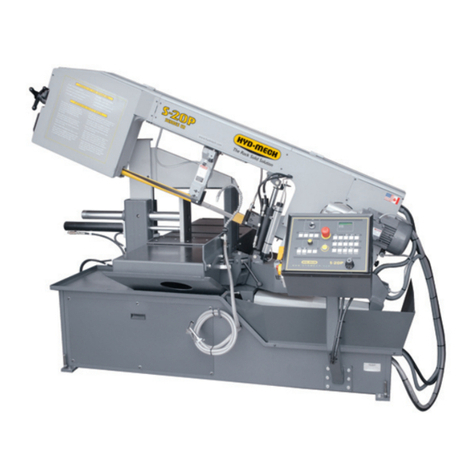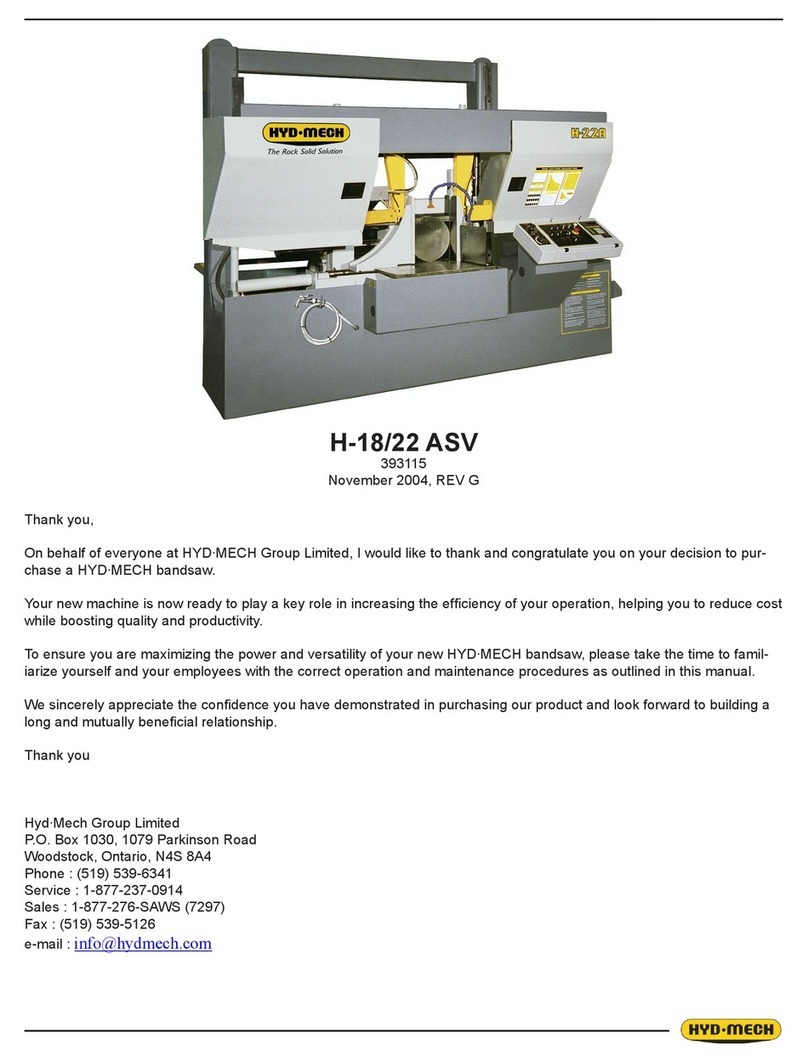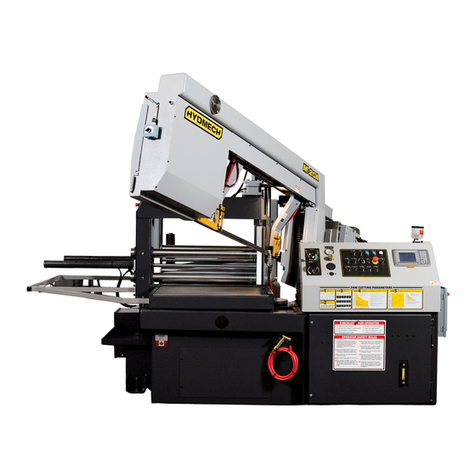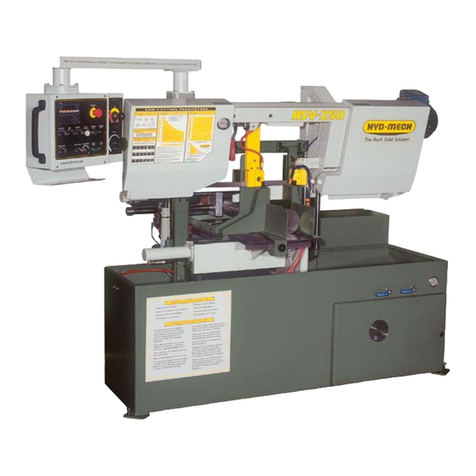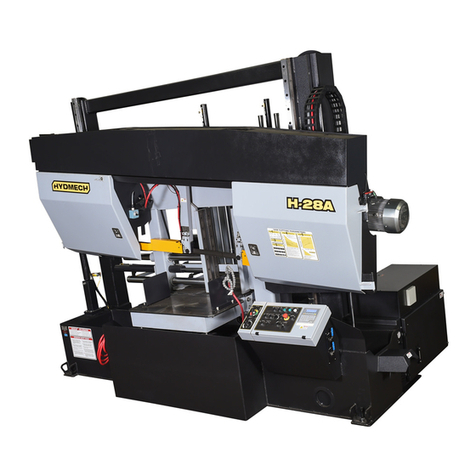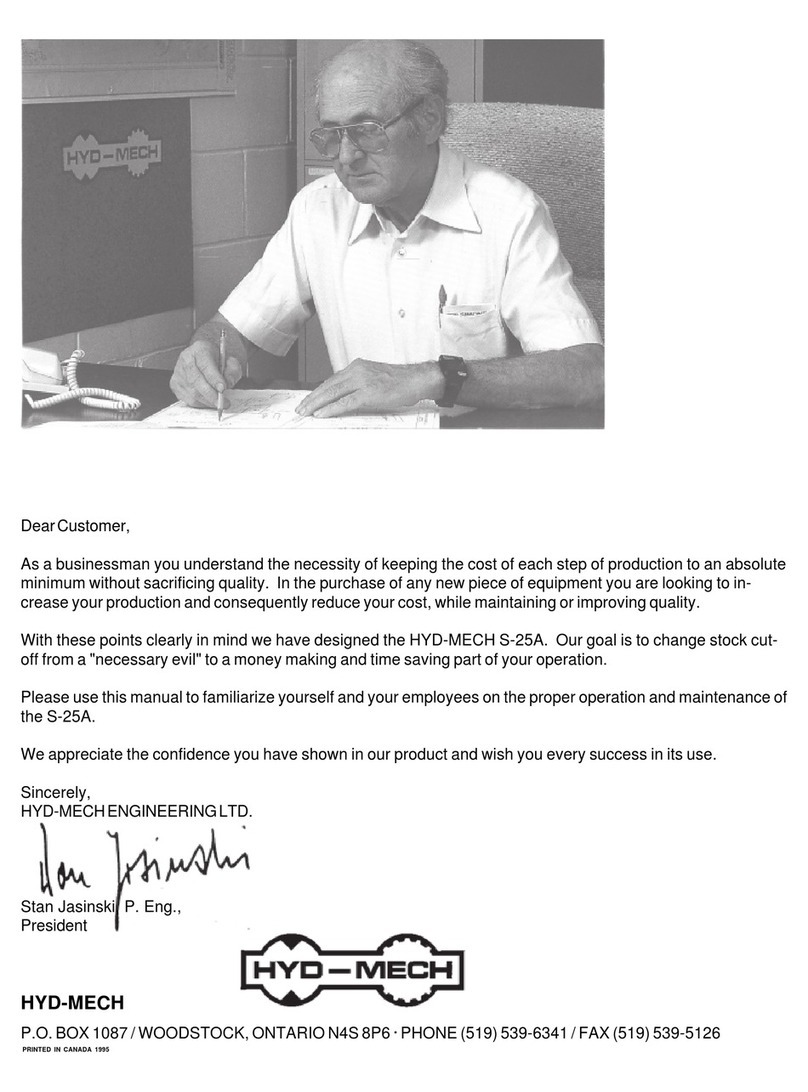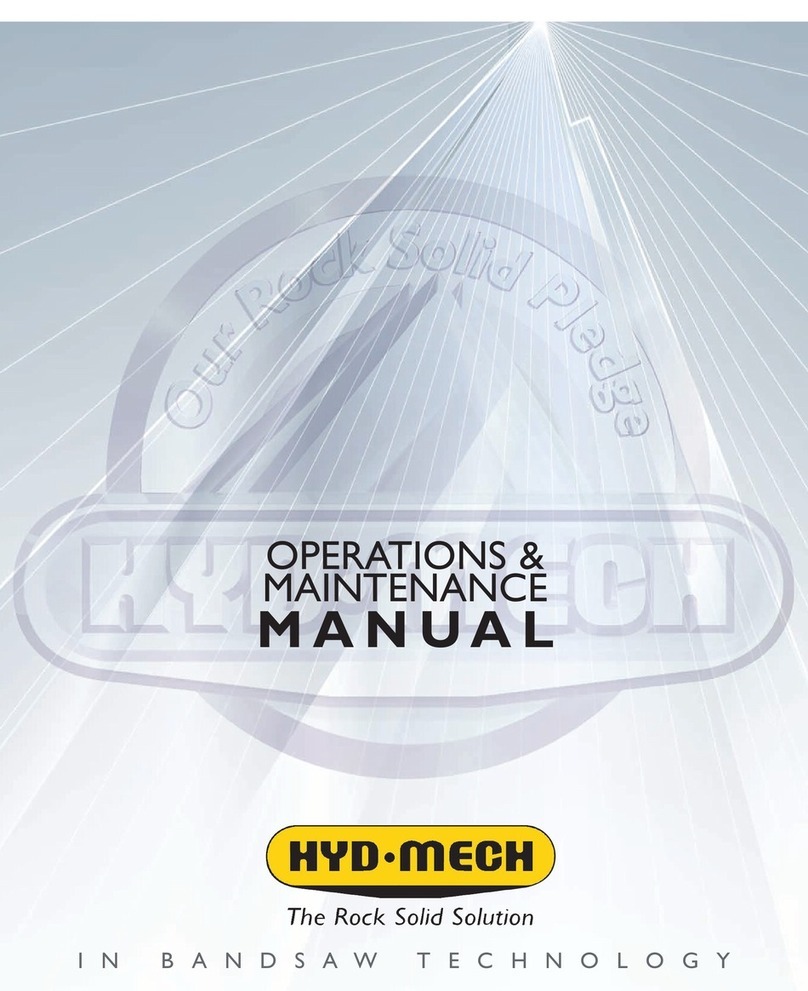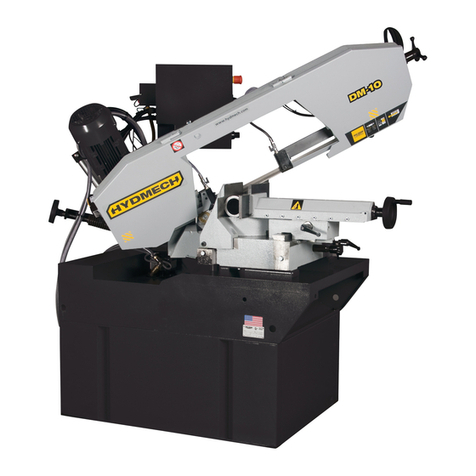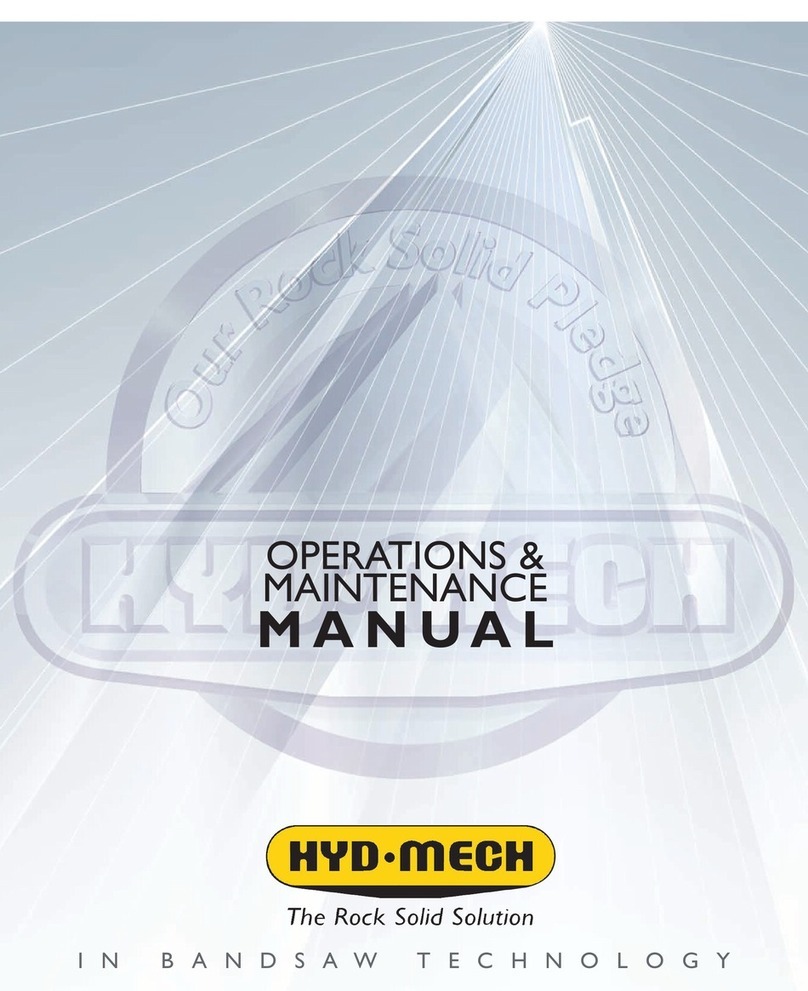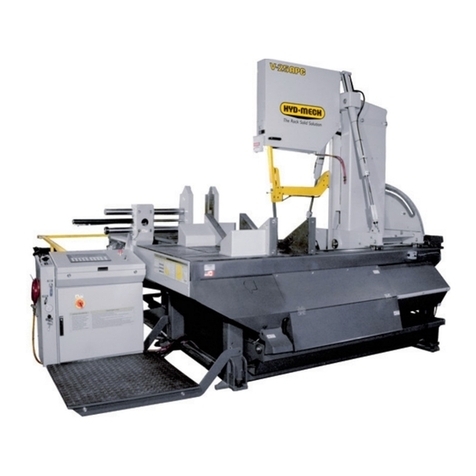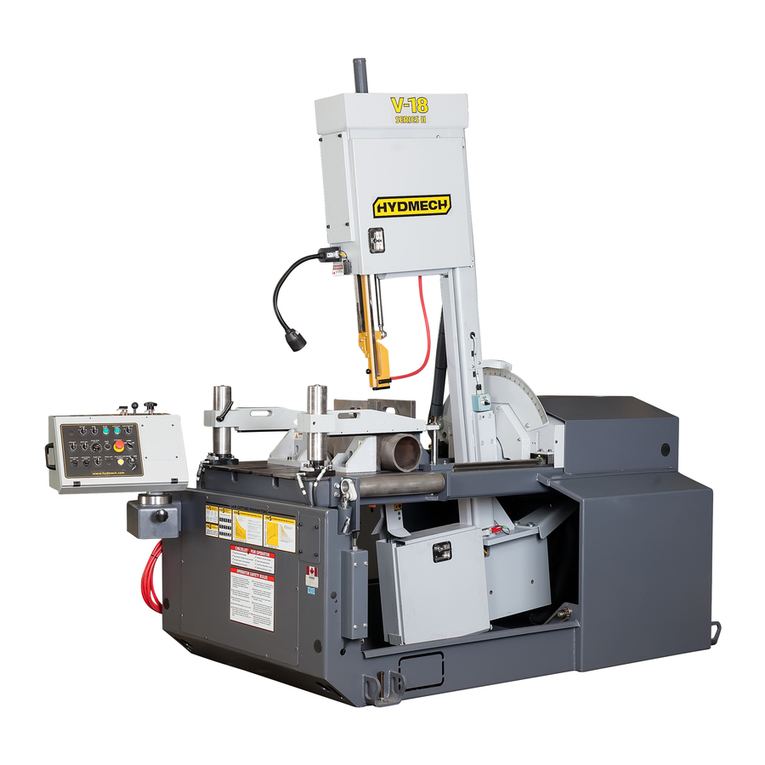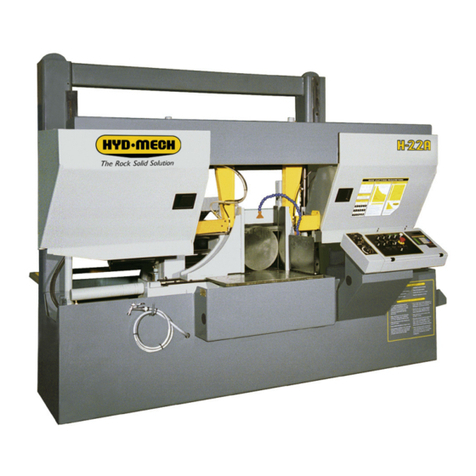
i S23 2001a
S23 Table of Contents
SECTION 1, INSTALLATION
SAFETY PRECAUTIONS ........................................................................................................................................ 1
LIFTING THE S-23 with a FORK LIFT ..................................................................................................................... 2
WRAPPED FOR SHIPPING .................................................................................................................................... 2
LEVELLING THE SAW............................................................................................................................................. 3
HYDRAULIC OIL ...................................................................................................................................................... 3
CUTTING FLUID ...................................................................................................................................................... 3
SPEED ADJUSTOR INSTALLATION ........................................................................................................................ 3
POWER CABLE ROUTING...................................................................................................................................... 4
POWER WIRING CONNECTIONS ........................................................................................................................... 4
SECTION 2, OPERATION INSTRUCTIONS
OPERATOR CONTROL PANEL ................................................................................................................................ 5
HYDRAULIC CONTROLS ................................................................................................................................... 5
ELECTRICAL CONTROLS.................................................................................................................................. 5
BLADE BASICS ..................................................................................................................................................... 6
DETERMINE OPTIMUM BLADE PITCH .................................................................................................................. 7
VISE OPERATION ................................................................................................................................................... 7
BLADE SPEED ADJUSTMENT ............................................................................................................................... 8
HEAD SWING and BREAK ..................................................................................................................................... 8
GUIDE ARM POSITIONING .................................................................................................................................... 9
COOLANT FLOW..................................................................................................................................................... 9
SECTION 3, MAINTENANCE and TROUBLESHOOTING
BLADE CHANGING PROCEDURE ........................................................................................................................ 11
BLADE TRACKING ADJUSTMENT .................................................................................................................. 12
Idler Wheel Adjustment ................................................................................................................................ 12
Drive Wheel Adjustment ............................................................................................................................... 12
BLADE GUIDE ADJUSTMENT ......................................................................................................................... 13
BLADE BRUSH ADJUSTMENT ........................................................................................................................ 13
ANGLE BRAKE ADJUSTMENT and PROCEDURE ............................................................................................... 13
DRIVE BELT REPLACEMENT .............................................................................................................................. 14
HEAD DOWN LIMIT SWITCH ................................................................................................................................ 14
LUBRICATION ....................................................................................................................................................... 15
TROUBLE SHOOTING GUIDE .............................................................................................................................. 16
SERVICE RECORD & NOTES ............................................................................................................................... 17
SECTION 4, ELECTRICAL SYSTEM
CONTROL PANEL & COMPONENTS .................................................................................................................... 19
ELECTRICAL COMPONENTS LISTS .................................................................................................................... 20
ELECTRICAL DRAWINGS ..................................................................................................................................... 22
ELECTRICAL DRAWINGS c/w blade breakage option ........................................................................................... 24
---- Continued ----
